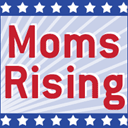Avoiding Vinyl Products At Home
What products are made of vinyl, and what are the healthy alternatives?
Shower curtains: choose curtains made of cotton, polyester, or nylon.
Toys: avoid soft plastic toys, such as plastic squeeze toys and soft plastic dolls, as much as possible. Healthy alternatives include plush and cloth toys, and bath toys made of fabric (such as animal-shaped bath mitts).
Rain gear: choose waterproof outerwear coated with polyurethane and rubber boots (check tags on clothing and avoid any item that contains vinyl, or PVC).
Flooring: choose linoleum, cork, bamboo, or wood instead of vinyl.
Wall coverings: choose zero-VOC paint, paper-based wallpaper, or wood paneling.
Windows and doors: the healthiest choice is wood, especially from certified sustainable sources.
Plastic wrap and food containers: plastic bags, plastic food storage containers, and cling wrap for residential use are made of PVC-free alternatives. Commercial-grade cling wrap is usually made of vinyl (PVC). If you buy deli items such as cheese that are packaged in cling wrap, cut off a thin layer where the food contacted the wrap and store in waxed paper or a food storage container.
Other products that can be made of PVC include: siding, electrical wire coatings, packaging, piping, garden hoses, fencing and decking, inflatable furniture, shutters and blinds, mattress covers, and notebook covers.
There are so many vinyl products to avoid, where should I start?
- If you have children, start by replacing vinyl toys that they mouth, chew, or play with regularly. Soft plastic toys such as bath toys, squeeze toys, and dolls are commonly made of vinyl. Learn more about safer toys and explore a searchable database of over 1000 toys at www.HealthyToys.org.
- Replace vinyl shower curtains with cloth curtains.
- Choose cloth lunch bags instead of vinyl lunch boxes. Lunch boxes made of plastic are typically made of vinyl.
- Don’t allow children to drink from garden hoses of any type.
Source: Washington Toxics Coalition

